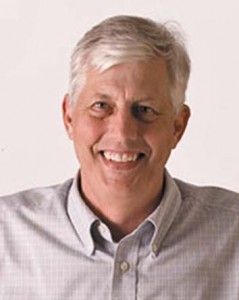 Houston, Broadly Defined
Houston, Broadly Defined
By Joe Pratt, Editor
At times Houston’s “suburbs” appear destined to reach from San Antonio to New Orleans and from Dallas to Cancun. Our city appears to know no bounds. Yet when I first moved to Houston upon entering Rice University in 1966, our city seemed to stop roughly at the current location of Loop 610. What a difference fifty years have made.
Having grown up near Beaumont, my introduction to Houston came from drives in on old U.S. 90 and later on I-10 to visit an uncle, attend high school athletic contests with schools from Baytown to Galena Park, and finally to see major league baseball. I got excited when the San Jacinto Monument came into sight (and more excited when we stopped to eat at the San Jacinto Inn). But the real eastern boundary for me was the Baytown tunnel under the ship channel or the Budweiser brewery on I-10. Tempering my excitement was the growing tension as my country boy dad broke into a cold sweat at the prospect of driving on Houston’s freeways.
 My sense of Houston’s boundaries extended in other directions while at Rice. Trips for a class project took me southwest to the Sugarland prison. I drove out South Main and onto a country road. My pleasant country drive culminated when the prison and the sugar mill popped up with few other buildings to block my view and very little traffic in the quiet little village town of Sugar Land.
My sense of Houston’s boundaries extended in other directions while at Rice. Trips for a class project took me southwest to the Sugarland prison. I drove out South Main and onto a country road. My pleasant country drive culminated when the prison and the sugar mill popped up with few other buildings to block my view and very little traffic in the quiet little village town of Sugar Land.
To the west, Houston seemed to end at the turn-offs to Memorial, before the spot where Beltway 8 now crosses I-10 in a maze of freeways. From there a leisurely drive led to the small town of Katy, which passed in a quick blur on trips to Austin. Towns like Katy were then thought of as one-horse towns or, more accurately, one-high-school towns.
When we drove to Austin on U.S. 290, we left the city somewhere around Cypress Fairbanks High School, then the only high school in Cy-Fair. Beyond were few subdivisions. U.S. 290 was still a hazardous four-lane, undivided highway with no resemblance to the four-lane “Interstate Aggie” that now goes to Hempstead. Just past that town was the infamous dead man’s curve where 290 crossed Highway 6 at the intersection of UT and A&M.
The landmark that served as a northern boundary in these years was the Goodyear blimp hangar near Spring. I have fond memories of a road trip to Huntsville to the prison rodeo to show some of my non-Texan friends at Rice the real Texas. We had a ball watching the prison “volunteers” try to ride bulls or half-heartedly attempt to snatch a $100 bill taped between a mad bull’s horns. The announcer’s introduction of each contestant went something like this: “The old boy gettin’ ready to ride is Joe Pratt; he’s serving 8-10 for armed robbery. Let’s give him a hand.” After Buck Owens performed on a platform pulled into the arena by a tractor, we headed back to the city, passing only a few filling stations and homes along the stretch of road now dominated by the urban clutter of Conroe and The Woodlands.
It gives me pause to remember the Houston I first encountered in my teen-age years. Freeways now seem to fill up the moment they are finished, with HOV lanes at times becoming parking lots. The cute little trains downtown have as yet made little impact on traffic congestion. Life in the suburbs can be good, but few honest observers in 2016 can say the same about life on our freeways. And if you want to take a leisurely drive down a country road from Houston to Sugar Land or Katy or Conroe, I recommend the road I take more and more often these days, Memory Lane.

 Follow
Follow